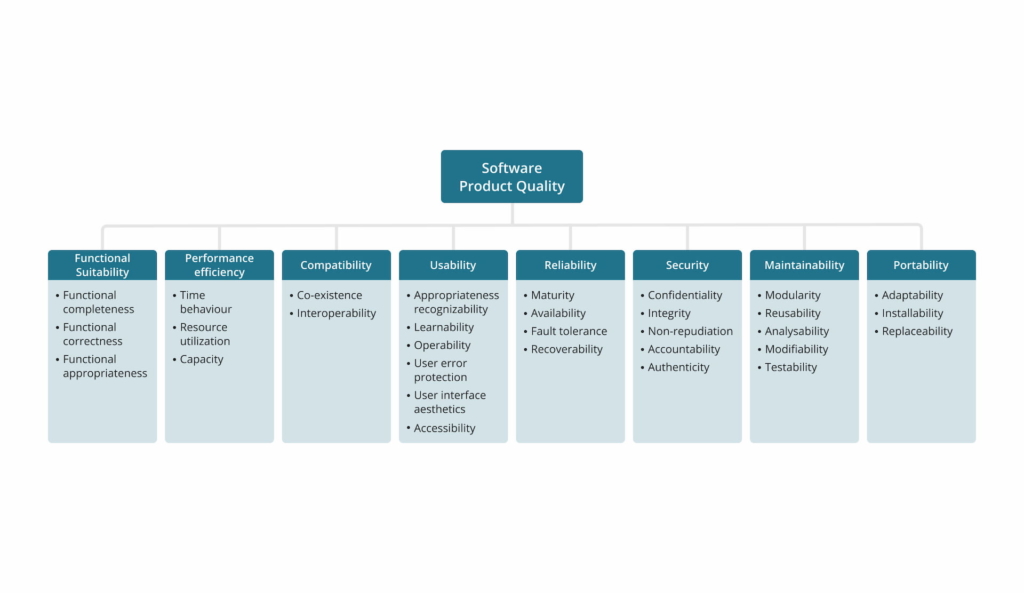Quality Assurance
A Failsafe
Quality assurance may not be the most glamorous topic, but it holds incredible significance in digital design. It’s the pivotal point where your dedication to delivering exceptional products and services truly shines. As an agency, professional, and creator, the quality of your deliverables speaks volumes about your credibility. Quality assurance safeguards your work from manufacturing mishaps and ensures a flawless delivery experience. By embracing QA, you take control of the outcome rather than leaving it to chance.

Following the Path of Excellence
Quality assurance is often the responsibility of department heads or project managers, those entrusted with the success of the project. While there are various criteria to consider, adhering to generally accepted standards is essential. ISO/IEC 25010 provides a comprehensive list of software product quality attributes that guide us in determining the properties of our work. For marketing websites, usability and performance efficiency take the spotlight, resulting in polished, intuitive interfaces that are easy to navigate and optimized for speed—an essential aspect of SEO.

In simple terms, operability refers to how easily a product can be operated and controlled, while attractiveness captures the user’s satisfaction and delight in interacting with the interface. A good product goes beyond meeting its basic purpose—it strives to exceed expectations. This is where quality assurance plays a crucial role, elevating a product from mere satisfaction to excellence.

Evolving Towards Perfection
ISO 25010 emphasizes the importance of aligning the product with the user’s intent. Each design review phase offers an opportunity for improvement, refinement, and the realization of its full potential. Design is a continuous journey, with each iteration pushing the boundaries of quality further. As more designers and coders collaborate to enhance the product, it evolves into a remarkable masterpiece.

The Final Checkpoint
Quality assurance serves as the ultimate checkpoint, allowing us to review our work and release the highest quality deliverables into the world. Ideally, QA should be an integral part of every development stage, ensuring that quality controls are in place before progressing to the next phase. By conducting thorough QA, we can identify and address any functional gaps, ensuring that all elements harmoniously align. From SEO-driven content to meticulously designed graphics, every aspect interconnects to fulfill the intended purpose. The success of the QA process lies in ensuring that intent permeates every phase of development.
In the dynamic world of digital design, quality assurance empowers us to deliver excellence, build trust, and exceed expectations. By dedicating ourselves to the pursuit of quality at every step, we create products and services that resonate with users and make a lasting impact. Let quality assurance be your guiding light as you embark on the path of creating exceptional digital experiences.









